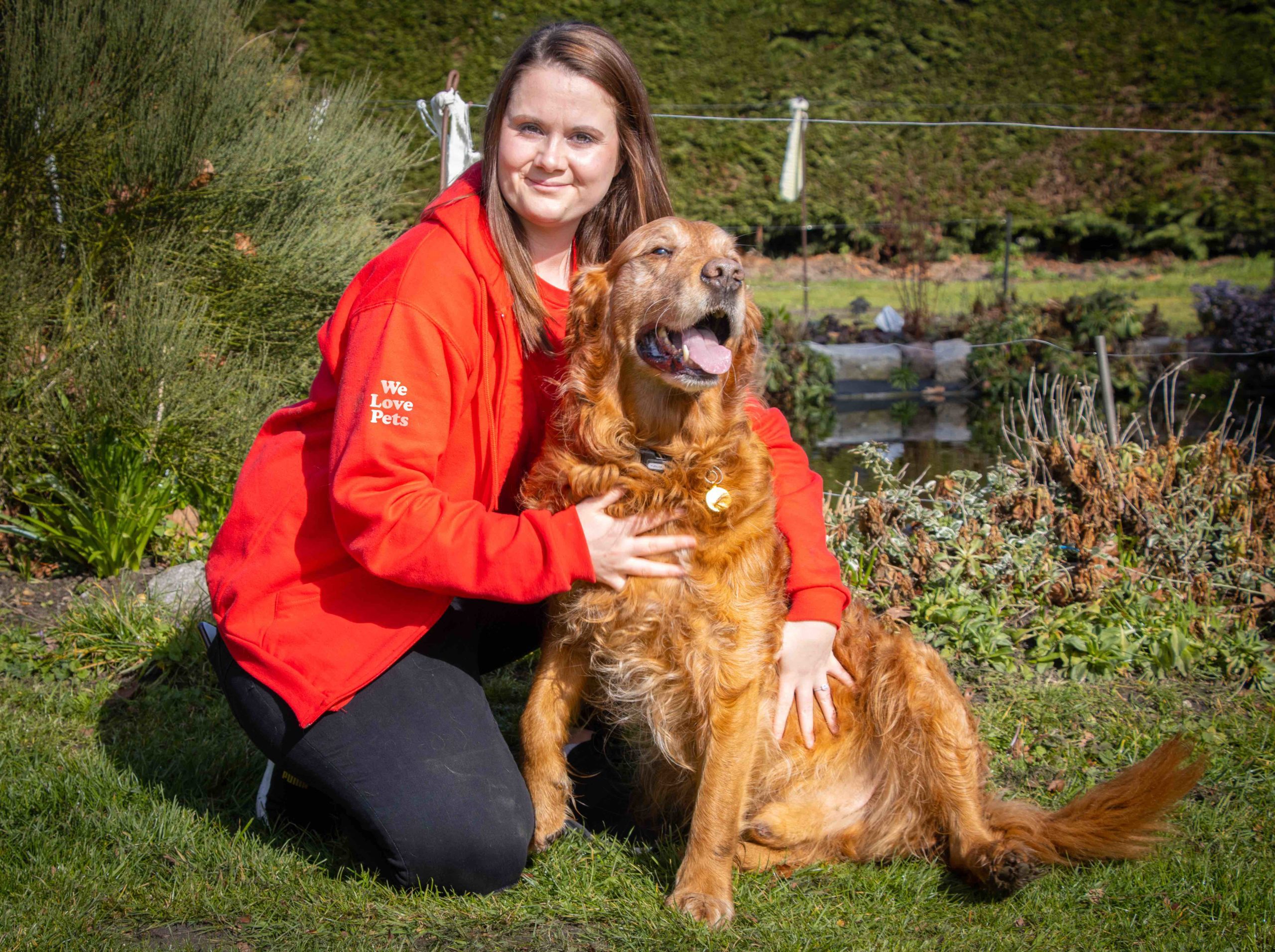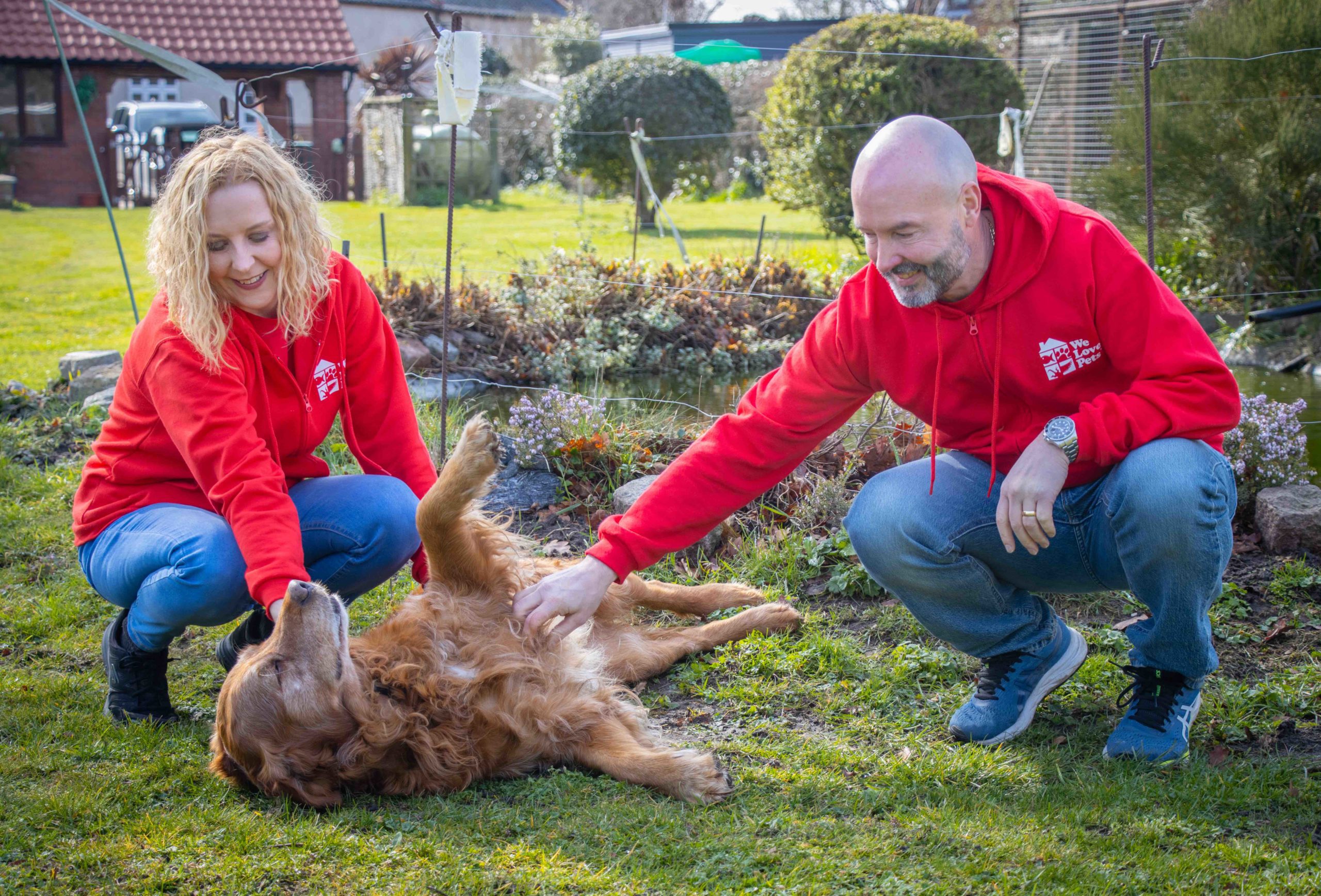As we approach what is commonly tick season from March to November it is useful to know as dog owners where the most common species of tick are found in the UK . We have had such a wet winter that it is likely conditions will be very favourable for ticks once the weather starts to warm up this year. It is very difficult to limit the spread of tick borne disease due to the prevalence of wildlife (hedgehogs, foxes, deer, badgers, birds and small rodents) that will be out in places where we like to walk our dogs.
The tick risk, however, can start in our own back garden where hedgehogs and foxes may come through, in our local parkland’s and out in rural areas where public footpaths stretch through farm land. The tick cannot jump like a flea but it will crawl up long blades of grass and by the action of a dog or human walking through it will catch a ride by grabbing out with its front legs to a passing body.
Ticks tend to thrive in damp and marshy areas and so dogs who love water may be more likely to come into contact with them.
Research from Bristol University in 2016 showed that the ”geographical prevalence of ticks is directly linked in the distribution of wild deer” and the most common genus of tick in the UK is Ixodes .
Two particular Ixodes ticks are found on dogs and cats in the UK. Let’s explore these in turn.
The sheep or deer tick
Ixodes ricinus is also known as the sheep or deer tick so not surprisingly dogs walking in areas where there are sheep and deer may well pick up this particular tick. The Ixodes ricinus uses sheep and deer as a host mammal where it has the most success in breeding. The tick favours high humidity so can be found more often in the wetter south western and northern regions of England and up to Scotland. It has however been found in southern eastern coastal areas as well. As this tick favours deer as a host, dogs are likely to pick it up on walks in woodland areas.
In the hotter regions of the UK, tick activity can drop significantly but they will remain active in cool, damp locations. There is little activity in the winter months.
Ixodes ricinus is the most common carrier of the bacteria Borrelia in the UK. This bacteria is what causes Lyme Disease (Borreliosis).
The hedgehog tick
Ixodes hexagonus is also known as the hedgehog tick. Going back to the study in 2016 by Bristol University, this tick was the most prevalent tick found on dogs and also the most common tick found on cats. The larvae from this tick live almost exclusively on hedgehogs hence its name but can also be seen on other small mammals that have nests and dens.
Dogs and cats tend to be accidental hosts as they pick the tick up from areas where hedgehogs are active. It is most prevalent in the south east of the UK but has also been seen in the north and Scotland but not as often.
The British dog or fox tick
There is a third Ixodes tick called Ixodes canisuga also known as the British dog or fox tick. This species is more often found in outside dog kennels so might be seen on working dogs like sheep dogs. It can be found in the wild on foxes and those mammals that have a lair throughout the UK and Ireland.
Where do ticks tend to attach on a dog?
Some dogs go through their whole life having never had a tick and others may get several every year. Generally ticks will attach to areas of the body with exposed skin and less hair where there are rich blood vessels close to the surface. Abdomen, armpits, ears, around the eyes, groin, under the tail and between the toes are good places to start when back from a dog walk. Ticks will have most success on the shorter hair breeds where it is easier to reach the skin surface.
Preventing tick borne disease
As a dog walker I always carry a Tick Twister with me. The two size packs are useful as ticks that have just attached will not have started to feed and engorge and so they will be a lot smaller. If the tick can be removed within the first 48 hours of it attaching the risk of contracting something nasty like Lyme disease is reduced. Even if a dog is on treatment for tick prevention no acariside will be 100% effective
Regular use of a tick product should be used in dogs walked in known high risk tick areas. Spot-ons, tablets, and collars diffuse anti-parasitic treatment into the fatty layers of the skin causing a tick to detach itself. However the tick has to bite for this to be effective with all but the collar so another reason to always remove any ticks seen.
The collar repels ticks releasing low concentrations of an anti-parasitic through the skin and coat so that the tick is killed through contact with the active ingredient rather than having to bite.
When removing a tick it is very important to remove it correctly with a Tick Twister. Rotate the hook either clockwise or anti clockwise depending on whether you are right or left handed so that the mouth parts of the tick unhook. NEVER pull a tick off as you could leave the mouth-parts in the skin which can lead to a painful abscess forming.




